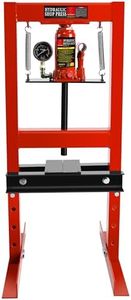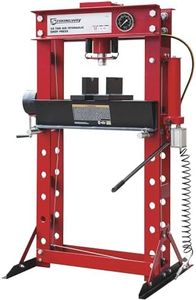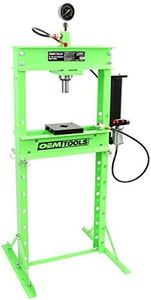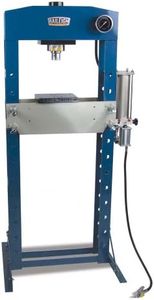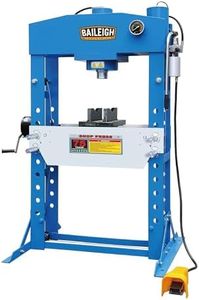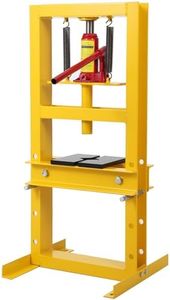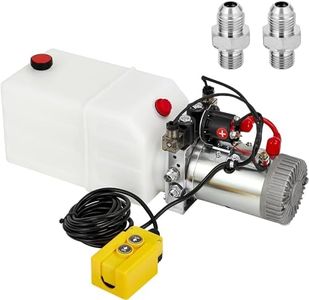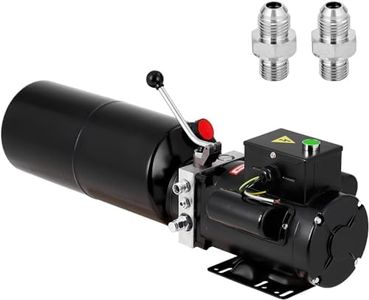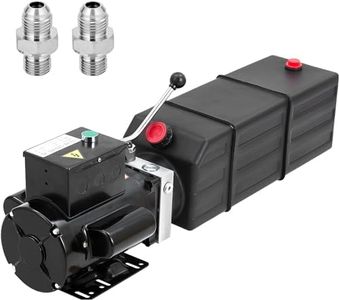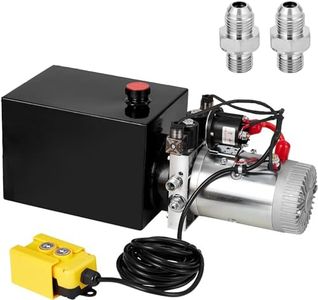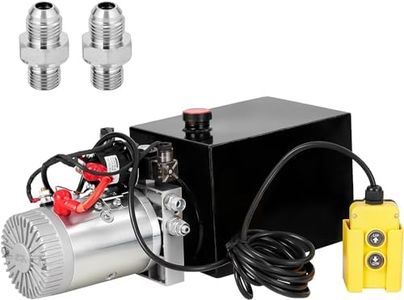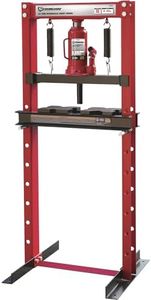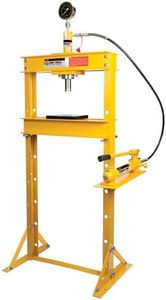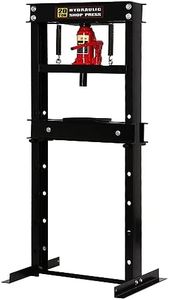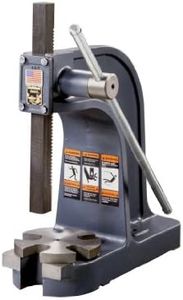10 Best Hydraulic Presses 2025 in the United States
Our technology thoroughly searches through the online shopping world, reviewing hundreds of sites. We then process and analyze this information, updating in real-time to bring you the latest top-rated products. This way, you always get the best and most current options available.

Our Top Picks
Winner
Strongway 40-Ton Pneumatic Shop Press with Gauge and Winch
The Strongway 40-Ton Pneumatic Shop Press is a solid choice for heavy-duty tasks in a workshop setting. With a 40-ton capacity, it's suitable for pressing, bending, and straightening large materials.
The high-grade steel H-frame construction ensures durability and long-term use, while the lead-free paint finish resists oil, grease, and dirt, making cleanup easier and helping to prevent rusting over time. The large diameter hydraulic steel cylinder unit requires lower oil pressure to raise loads, which reduces wear and extends the press's service life.
The piston-ram, treated and polished, adds to the durability by resisting skiving. Given its weight and dimensions, it is clear that this press is designed for stationary use in a professional workshop rather than for portable purposes. It's a reliable option for those needing a robust and durable press for heavy-duty tasks.
OEMTOOLS 25087 Air Hydraulic 20 Ton Press with Double Speed Pump, Hydraulic Press, Wheel Bearing Press, Press Hydraulic
Most important from
22 reviews
The OEMTOOLS 25087 Air Hydraulic 20 Ton Press is a solid choice for those looking for a versatile hydraulic press, especially in automotive or metalworking applications. With a maximum tonnage of 20 tons and a double speed pump, it offers efficient operation that can save time when tackling various projects. The ability to switch between a hand pump and an air pump means you can choose the method that works best for your current task, which is a nice feature for versatility.
One of the standout strengths of this press is its adjustable features. The height of the support bar can be quickly adjusted, allowing you to work with larger materials effortlessly. The moveable press head and blocks add further flexibility, which is vital when working with different sizes and shapes of items.
The dual-scale pressure gauge is another highlight, providing clear and accurate readings, ensuring you apply the right pressure every time. This can help prevent mistakes that might occur when using a less precise gauge. However, there are a few drawbacks to consider. The press is quite heavy at 247.4 pounds, which can make it difficult to move around or reposition in your workspace. Additionally, while the durability of the steel frame is a plus, some users may find the assembly process a bit cumbersome. The press also comes with a 90-day warranty, which might not be sufficient for some users looking for long-term assurance.
Most important from
22 reviews
Baileigh 30-Ton H-Frame Pneumatic Shop Press (Model HSP-30A)
Most important from
19 reviews
The Baileigh 30-Ton H-Frame Pneumatic Shop Press (Model HSP-30A) is designed for users who need a powerful and reliable hydraulic press for industrial tasks. With a substantial 30-ton capacity and a stroke length of 5.9 inches, it can handle a variety of pressing jobs effectively. Its 21.65-inch working width and the ability for the cylinder to shift left and right within the frame make it versatile for different orientations of workpieces.
One standout feature is the use of industrial-grade hydraulic parts, which ensure consistent and smooth operation, promising durability for long-term use. The press is also designed with a rigid, fully-welded steel frame which enhances its stability and reduces flexing under full force, a critical factor for heavy-duty applications.
For delicate jobs, the manual operation is a helpful addition, allowing users to have more control over the pressing process. It also comes standard with V-blocks, which are useful for securing materials, adding an extra layer of convenience. The weight of the press at 405 pounds makes it less portable, which could be a limitation for users who need to move it around frequently. Additionally, while the pneumatic operation enhances efficiency, it may require a dedicated air compressor, which could add to the initial setup costs. Given its size and weight, it requires sufficient floor space, which is a consideration for smaller workshops.
Most important from
19 reviews
Buying Guide for the Best Hydraulic Presses
Choosing the right hydraulic press can be a daunting task, but with the right knowledge, you can make an informed decision that best suits your needs. Hydraulic presses are used in various industries for tasks such as forming, molding, punching, and assembling. The key to selecting the right hydraulic press is understanding the specifications that matter most to your specific application. Here are some key specs to consider and how to navigate them.FAQ
Most Popular Categories Right Now
